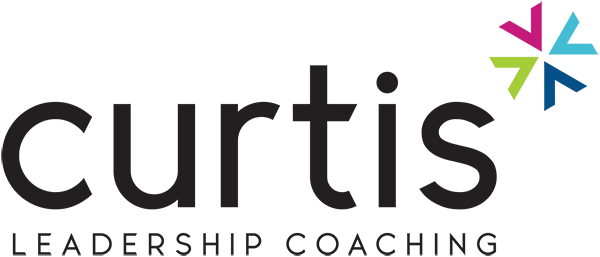Moving from grief to acceptance.
2020 was the year when even New Year’s Eve was cancelled. The ball drop in Times Square moved online like the rest of our engagements. Digitized, compartmentalized and isolated. These constant let downs, lock downs and human separation have led many of us to experience feelings of grief. Anger. Sadness. Anxiety. An overwhelming sense of shock and loss for the connections we had and the world we once knew.
And yet, on the other side of grief is acceptance. The conscious choice one makes to move forward. Now is a perfect time to consciously set ourselves up for the best year possible, in spite of all the challenges. Recovering from 2020 means we need that fresh start more than ever. This isn’t just about taking lemons and making lemonade. It’s time to stir up a whole new cocktail.
Here are three steps to make 2021 a year you won’t forget. And more importantly, one you will want to remember.
Actively Design Your Ideal Future
New Year’s is an annual break in time that leads you to zoom out and reassess your trajectory — are you on or off course? What changes do you want to make for you, your family, your finances, your career, your health or your relationships?
We often end up tolerating mediocrity rather than challenging it. Issues we are facing, no matter how painful or difficult, can seem like the safest bet. This is known as the familiarity bias.[1] Like the old expression, the devil you know is better than the devil you don’t. Even if the devil you do know is squashing your will to live. Generating a new, desirable outcome can set off your brain’s security system and cause your defense mechanisms to kick in. We end up rationalizing these less-than-ideal circumstances, or even coming to their defense. This leaves us with a pile of reasons why we couldn’t drive change, rather than any actual results.
If you notice yourself making excuses to yourself or others, it’s time to hijack your brain’s defensive mechanisms. This starts by creating a crystal-clear picture of that alternative outcome and going back to it on a daily basis, reimagining it to be your future reality. It turns out the parts of the brain that are activated when remembering the past are the same parts of the brain activated when we are imagining the future.[2] Regularly visualizing your ideal outcome is like forming memories of events that haven’t even happened yet, making it more familiar, certain, even probable.
To identify what changes are needed, it can be valuable to do a quick inventory of your current state. Grab a piece of paper, and on a scale of 1 to 10, rate how you are doing in each of the following areas of your life:
- Romantic relationships
- Friendships
- Family
- Fun and play
- Spirituality
- Fitness
- Health
- Finances
- Career
- Personal development
- Professional development
10 = I’m so satisfied I could kick my heels together while dancing in circles!
1 = It’s very hard for me to get out of bed when I think about this part of my life.
Then choose two areas where you want to drive change. What changes do you want to see? Write down that new reality as a mantra so every cell in your body knows where it’s headed. Researchers in Germany found that just by having goals, performance improved by 12 to 15 percent.[3] No extra incentives or rewards required. I also recommend using language that clearly denotes the active engagement towards a goal rather than something far off in the future. Choosing statements that start with “I am” vs. “I will.”
It’s equally important to recognize that the activities required for goal achievement may look different this year. Your buff body routine may require at-home videos or a Peloton purchase in place of the gym. Your career change may require virtual networking and Zoom calls instead of dinners out. These limitations shouldn’t stop you. Not even for a minute.
Analyze Your Time
Before the pandemic, we were all strapped for time. And yet somehow, over the course of the past 10 months, the average American workday increased by three hours. While many lost the need to commute, they found themselves at their “desks” earlier and often staying later since their workplace was also their home. As we move into 2021, this extended workday isn’t something worth keeping. According to a Stanford University study, employees who work more than a 50-hour workweek lose gains after their 55th hour. You read that right: Putting in a 70-hour workweek doesn’t produce any more output than that of those who are working 15 hours less.
The reality is there is no prize for the most work performed. It all comes down to being clear on how you measure your own success and managing your calendar, time and energy accordingly. That doesn’t mean fitting everything into whatever possible slot presents itself. It’s about choosing what needs to be on the calendar in the first place (or “at all”) so you can show up and perform at your best, clearing off as much of the dead weight that may be unnecessarily draining your energy.
Here are three questions I often ask my clients:
- What activities or blocks of time need to be scheduled in to get the important, goal-focused work done?
- What elements of your current routine are an obstacle to achieving your desired outcome?
- What can you delegate, outsource or just flat out stop doing?
Actively managing your energy levels is as important as managing your time. When your energy tank is empty, everything is affected. Responses become short and matter of fact, concentration suffers, tasks are rushed, and you can feel down, disengaged, unmotivated or even numb. This constellation of symptoms doesn’t bode well for productivity or effective relationships.
When you look at the week ahead and feel a sense of dread or dismay, that’s a good indicator that you haven’t set yourself up for success. In a day laden with meetings, where can you block time for exercise? What meetings can you do while walking? Where can you carve out time for lunch, family connection or breaks? While your pre-pandemic routine may no longer be accessible, what could it be in this new environment we live in?
When the pandemic first hit, we thought it could last days or weeks. Certainly not months or years. It created this type of time warp where goals fell to the wayside while we focused on the constant changes around us. Now is the time to get back on track and reset, actively designing our pandemic-friendly future.
Pull Forward What’s Working
Looking back at 2020, there was a lot that didn’t work out. Some of it was devastatingly awful. And yet, there were definitely some silver linings. Many businesses adapted and boomed. Employees dug in, outperformed, and got promoted. People quit their jobs and found more fulfilling and financially lucrative positions. And with business travel halted, families spent more time connecting and building memories within their own four walls.
I recommend that my clients actively choose what elements from last year they want to pull forward. In fact, why not take a moment now and quickly jot down a few notes. What actually improved your life and is worth holding onto? What do you want to make a permanent part of your routine?
The reality is, it may be summer or even fall before we can go back to our pre-pandemic existence, and even then, it may look different than before. There will be hard moments where we undoubtedly experience emotions of grief, anger, sadness, and anxiety. That’s OK, these are very real struggles we are facing. But it’s equally important to refocus our efforts toward how we can make this year our best year yet. After all, New Year’s Eve wasn’t really canceled. In fact, we needed it now more than ever. It’s a fresh start we can use to propel us forward so that we not only survive this but thrive. I enjoyed raising my glass to that at midnight. Even though I was in my pj’s on a Zoom call with friends.
References
[1] https://www.ncbi.nlm.nih.gov/pmc/articles/PMC4552483/
[2] https://www.ncbi.nlm.nih.gov/pmc/articles/PMC3815616/
[3] https://www.sciencedirect.com/science/article/pii/S2212827115001626

